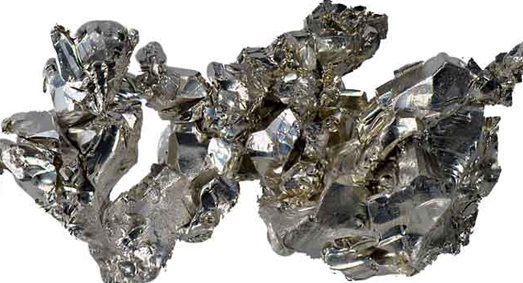
Steel is renowned for its strength and versatility, making it a vital material across various industries. Enhancing the strength of steel is crucial to meet the demands of structural and high-performance applications. Calcium, an element commonly associated with bone health, also plays a significant role in improving steel strength. In this article, we will explore the contribution of calcium to steel strength enhancement and its impact on the steel industry.
Calcium has the ability to refine the grain structure of steel, which directly influences its strength. When calcium is added to molten steel, it promotes the formation of fine-grained structures during solidification. Finer grain sizes provide a more uniform distribution of crystals within the steel, resulting in increased strength and improved mechanical properties. The refined grain structure helps to prevent crack propagation, enhancing the steel's resistance to fatigue and improving its overall strength.
Another way calcium contributes to steel strength improvement is through solid solution strengthening. Calcium atoms can be dissolved into the iron lattice of steel, creating a solid solution. The presence of calcium atoms in the lattice creates lattice strain, which hinders the movement of dislocations. Dislocations are defects in the crystal structure that can weaken the material. By impeding dislocation movement, solid solution strengthening enhances the steel's resistance to deformation, increasing its strength and hardness.
Calcium can also participate in precipitation strengthening, a process that involves the formation of fine precipitates within the steel matrix. When calcium is added to steel, it can react with other elements present in the alloy, such as aluminum or nitrogen. These reactions result in the formation of dispersed precipitates, such as calcium-aluminum nitrides, that act as barriers to dislocation movement. The presence of these precipitates significantly enhances the steel's strength and hardness.
Calcium can strengthen the grain boundaries of steel, which are the interfaces between individual grains. Grain boundaries can be weak areas where cracks can initiate and propagate, reducing the overall strength of the material. The addition of calcium helps to improve the cohesion and bonding at grain boundaries, making them less prone to cracking. Strengthening the grain boundaries enhances the steel's ability to withstand external stresses and increases its overall strength.
Calcium promotes the formation of a more homogeneous microstructure within the steel. The addition of calcium during steel production helps to control the segregation of alloying elements and impurities, leading to a more uniform distribution throughout the material. This improved microstructural homogeneity contributes to enhanced strength by reducing variations in material properties and ensuring consistent performance across the steel.

The utilization of calcium for steel strength improvement finds applications in various industries, including construction, automotive, aerospace, and manufacturing. The benefits of incorporating calcium into steel production are numerous:
Higher Yield Strength: Calcium-enhanced steel exhibits increased yield strength, making it suitable for applications that require high load-bearing capacity and resistance to deformation.
Improved Fatigue Resistance: The refined grain structure and solid solution strengthening offered by calcium result in improved fatigue resistance, reducing the risk of failure under cyclic loading conditions.
Enhanced Hardness: Calcium strengthens the steel matrix, leading to increased hardness, which is desirable in applications that require wear resistance and durability.
Consistent Mechanical Properties: The microstructural homogeneity achieved through calcium addition ensures consistent mechanical properties across the steel, enabling predictable and reliable performance.
In conclusion, calcium plays a crucial role in enhancing the strength of steel through grain refinement, solid solution strengthening, precipitation strengthening, grain boundary strengthening, and improved microstructural homogeneity. These mechanisms work together to improve the steel's yield strength, fatigue resistance, hardness, and overall performance. The utilization of calcium for steel strength improvement opens doors for advanced applications in industries where high-strength materials are required. Continued research and implementation of calcium-based techniques offer promising opportunities for further advancements in steel strength and the development of innovative steel products.

Write a Message